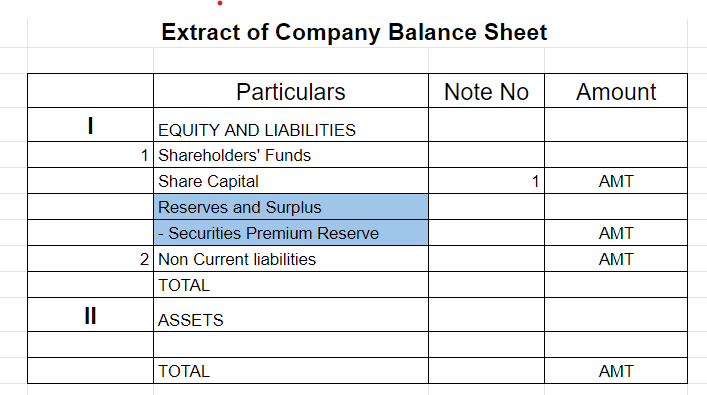Order of Liquidity Under this method, a company organizes current and fixed assets in the balance sheet in the order of liquidity and the degree of ease by which it is converts converted into cash.On the asset side, we will write most liquid assets at first i.e. cash in hand, cash at bank and so onRead more
Order of Liquidity
Under this method, a company organizes current and fixed assets in the balance sheet in the order of liquidity and the degree of ease by which it is converts converted into cash.On the asset side, we will write most liquid assets at first i.e. cash in hand, cash at bank and so on and further. In the end, we will write goodwill.
Liabilities are presented based on the order of urgency of payment. On the liabilities side, we start from short-term liabilities for example outstanding expenses, creditors and bill payable, and so on. In the end, we write capital adjusted with net profit and drawings if any.
This approach is generally used by sole traders and partnerships firms. The following is the format of Balance sheet in order of liquidity:
Order of Permanence
Under this method, while preparing a balance sheet by a company assets are listed according to their permanency. Permanent assets are shown at first and then less permanent assets are shown afterward. On the assets side of the balance sheet starts with more fixed and permanent assets i.e. it begins with goodwill, building, machinery, furniture, then investments and ends with cash in hand as the last item.
The fixed or long-term liabilities are shown first under the order of permanence method, and the current liabilities are listed afterward. On the liabilities side, we start from capital, Reserve and surplus, Long term loans and end with outstanding expenses.
The following is the format of the Balance sheet in order of permanence:
Such order or arrangement of balance sheet items are refer as ‘Marshalling of Balance Sheet’.
See less






No, they are not the same. They are both used to measure the short term liquidity of a business but their approach is different. Following are the differences between the two : Let’s take an example. Following is the balance sheet of X Ltd: Hence, as per the following information, Current Ratio = CuRead more
No, they are not the same. They are both used to measure the short term liquidity of a business but their approach is different. Following are the differences between the two :
Let’s take an example.
Following is the balance sheet of X Ltd:
Hence, as per the following information,
Current Ratio = Current Assets / Current Liabilities
= Inventories + Trade debtors + Bills receivables + Cash and bank + Prepaid Expenses / Trade Creditors + Bills Payables + Outstanding Salaries
= ₹85,000 + ₹2,50,000+ ₹95,000 + ₹1,50,000 + ₹10,000/ ₹2,00,000 + ₹75,000 + ₹25,000
= ₹6,00,000 / ₹3,00,000
= 2/1 or 2:1
Quick Ratio = Quick Assets / Current Liabilities
= Trade debtors + Bills receivables + Cash and bank / Trade Creditors + Bills Payables + Outstanding Salaries
= ₹2,50,000+ ₹95,000 + ₹1,50,000 / ₹2,00,000 + ₹75,000 + ₹25,000
= ₹5,05,000/ ₹3,00,000
= 41 / 25 or 1.68 : 1
Let’s discuss both ratios in detail.
1. Current ratio:
The current ratio represents the relationship between current assets and current liabilities
Current ratio = Current Assets/Current Liabilities
It measures the adequacy of the current assets to current liabilities. The main question this ratio tries to answer is: – “Does your business have enough current assets to meet the payment schedule of its current debts with a margin of safety for possible losses in current assets?”
The generally acceptable current ratio is 2:1. But it depends on the characteristics of the assets of a business to judge whether a specific ratio is satisfactory or not.
2. Quick Ratio: Quick ratio is the ratio between quick assets and current liabilities. It is also known as the Acid Test Ratio. By quick assets, we mean cash or the assets that can be quickly converted into cash ( near cash assets)
Quick Assets = Current Assets – Inventories – Prepaid assets
Quick ratio = Quick Assets/Current Liabilities
Inventories are not considered near cash assets.
The quick ratio is a more conservative approach than the current ratio to measure the short term liquidity of a firm.
It answers the question, “If sales revenues disappear, could my business meet its current obligations with the readily convertible quick funds on hands?”
1:1 is considered satisfactory unless the majority of the quick asset are accounts receivable and the receivables turnover ratio is low.
See less